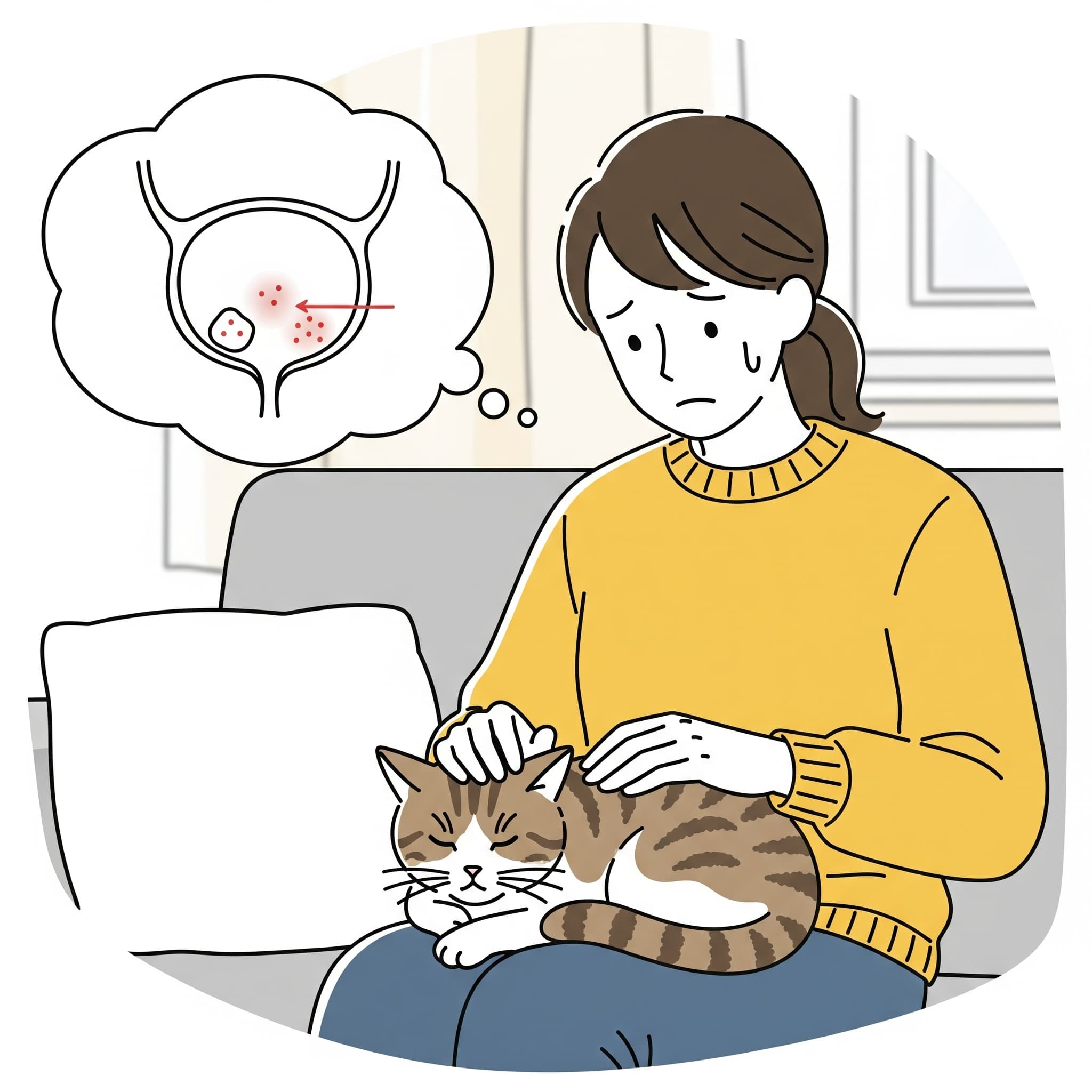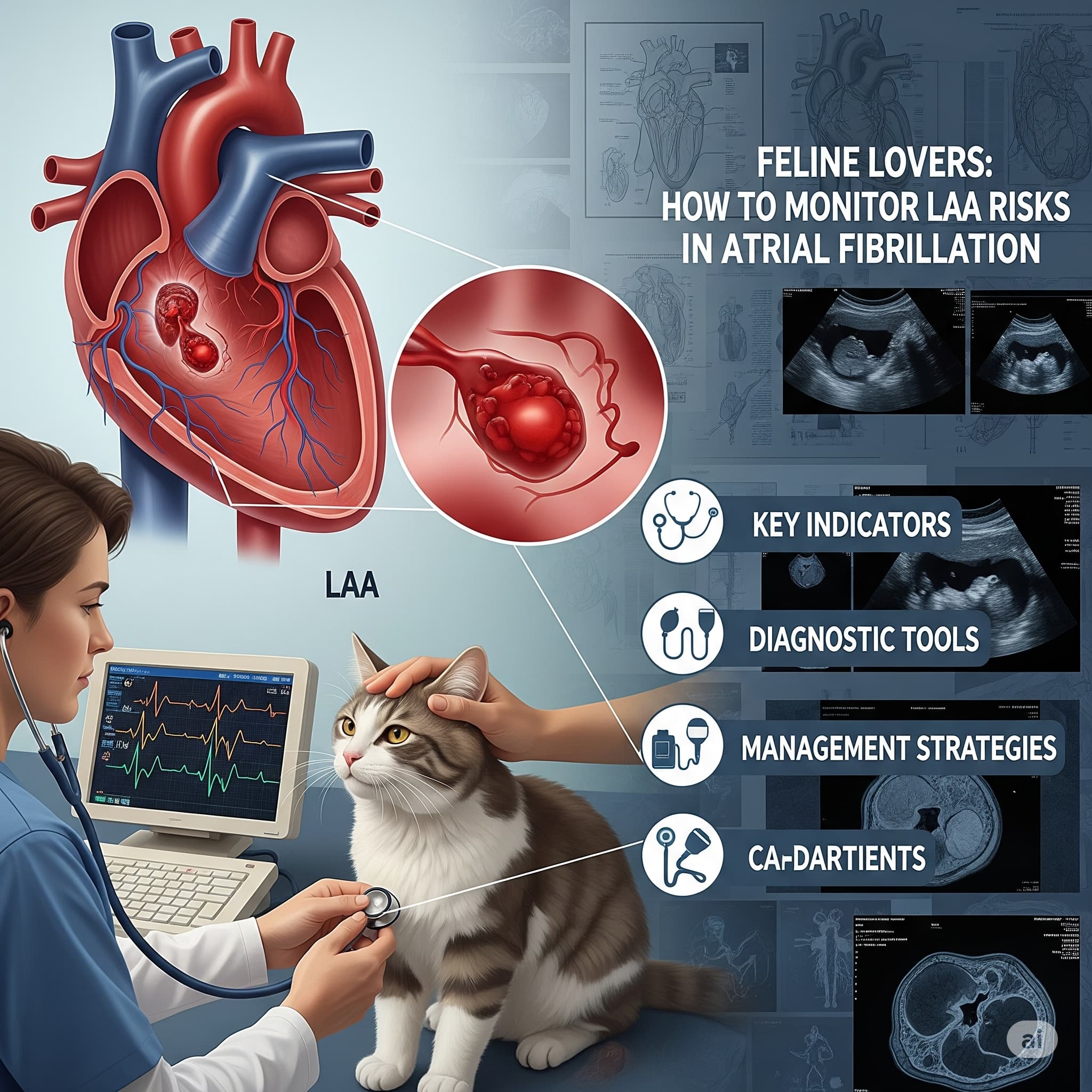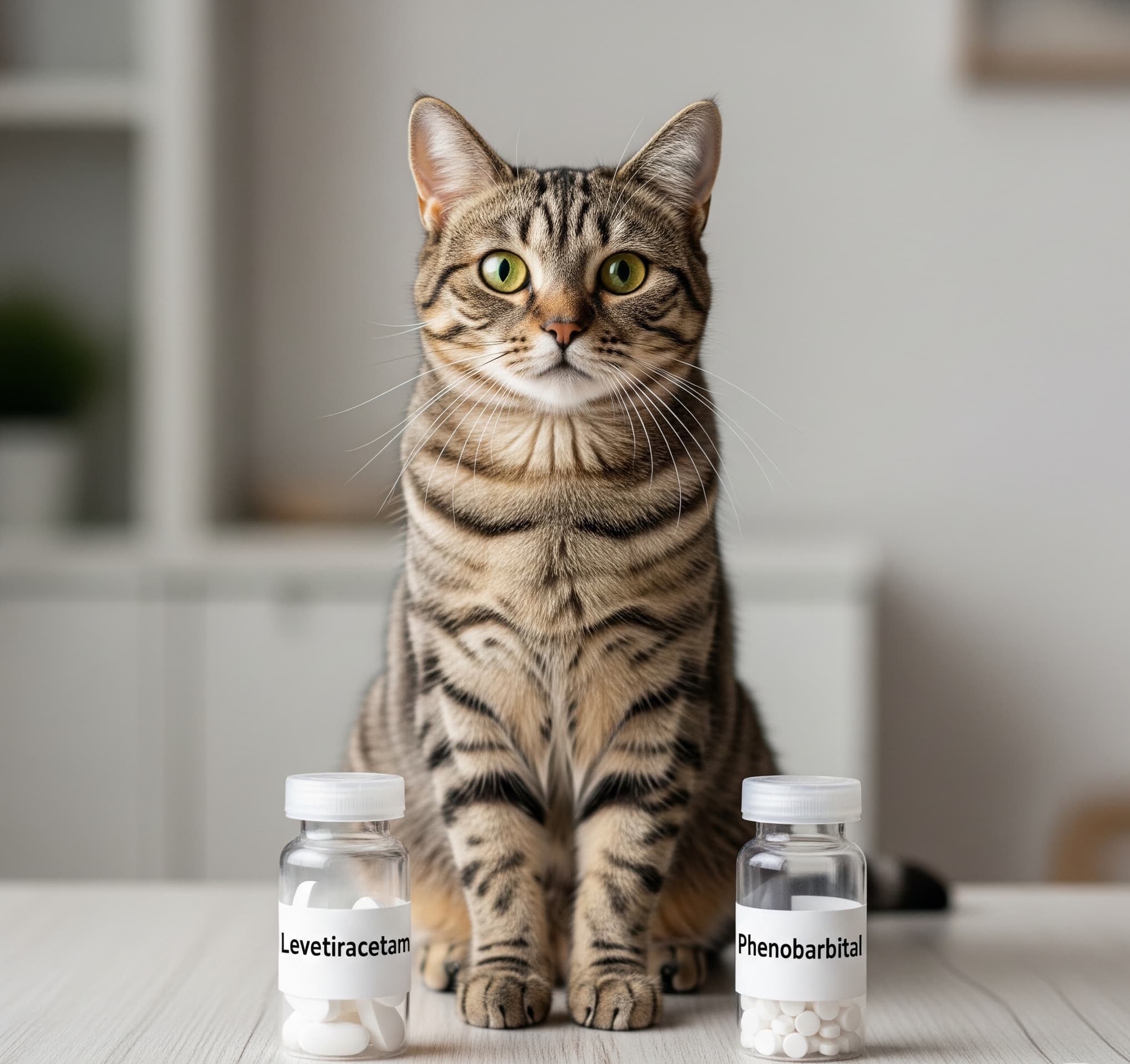New Pet Parents: Essential Tips to Block Eisenmenger in Cats with Heart Issues
New cat parents: Learn how to recognize and stop Eisenmenger syndrome in kittens with heart defects. Early action protects your pet!
Introduction
Welcome to cat parenthood! Congratulations on that fluffy new friend. Before you get too cozy, take a moment to feel that quick little heartbeat. Could it be hiding something serious, like Eisenmenger syndrome? It sounds alarming, and it can be especially in kittens with congenital heart defects. This guide is your blueprint for spotting trouble before it starts. We’ll break things down and give you clear, practical steps. Imagine it as the extra layer of armor between your baby and unexpected illness.
Here’s a roadmap to help you find the answers you need, fast:
- What is Eisenmenger syndrome in cats?
- Common congenital heart defects can lead to it.
- How to spot early signs and get a firm diagnosis.
- Top prevention strategies for new cat owners.
- Frequently asked questions (FAQ).
Let’s jump in and keep your fur baby bouncing with joy!
What is Eisenmenger Syndrome in Cats?
Eisenmenger syndrome in cats is not a primary congenital disorder but rather a severe consequence of unresolved cardiac defects. Assume a feline patient is born with an interatrial septal defect: initially, the left-to-right shunt causes excess blood return to the pulmonary circulation. Over years, the elevated pulmonary vascular resistance progresses to vascular remodeling. Eventually, the pressure gradient inverts, resulting in a right-to-left shunt. Deoxygenated blood then enters the systemic circulation, leading to systemic cyanosis, exercise intolerance, and eventual right ventricular failure.
While the syndrome itself is uncommon in the feline population, its presence signals advanced disease. Practices typically encounter it as a terminal phase of congenital heart disease. The clinical progression is marked: the first objective finding is an initially benign left-to-right shunt on echocardiography; the prognosis diminishes once Doppler studies reveal pulmonary hypertension and reverse flow. The hallmark of clinical examination is cyanosis of the mucous membranes, notably the conjunctiva, and the presence of a loud, wide split second heart sound.
Why should new pet parents care? Kittens seem perfectly healthy at first glance. Then subtle signs emerge, often long after the primary problem has begun. By the time the symptoms are obvious, the damage may already be irreversible. Acting promptly, therefore, is essential—like fixing a tiny roof leak before it becomes a torrent. Veterinarians consistently emphasize that it is wiser to stop a problem before it starts, and believe me, you do not want to wait until the issue has progressed. Kittens affected by certain cardiovascular anomalies may face shortened life spans, but informed, proactive care can help you and your kitten avoid that outcome.
Research shows a connection between some cardiac anomalies—like ventricular septal defects and patent ductus arteriosus—and late diagnosis. While these conditions are more commonly reported in people than in cats, they do appear from time to time. One published case described a cat diagnosed with an atrial septal defect. Its symptoms improved with pharmacologic agents such as sildenafil, which managed the flow imbalance, but the long-term solution remained an early interventional approach to repair the defect while the kitten was still young.
As a new cat guardian, your most potent tool is understanding. Familiarize yourself with warning signs—recognizing them early can, quite literally, spare your kitten’s life. Ideally, knowledge rewards you with a spunky, purring companion whose joys you can fully embrace.
Common Congenital Heart Defects That Lead to It
“Congenital” simply signals “present at birth.” The spectrum of heart defects in cats is broad, yet a few conditions reliably spire toward Eisenmenger syndrome if left unmonitored. First, a ventricular septal defect (VSD) creates a perforation between the ventricles; the resultant left-to-right shunt inundates the pulmonary circulation, raises pressure, and, in a cruel twist, can eventually reverse the flow. The second major actor is atrial septal defect (ASD), a perforation between the auricles that, in principle, mimics the VSD outcome.
A third and insidious contender is patent ductus arteriosus (PDA), in which the ductus, a fetal vessel, fails to close postnatally. The unregulated flow into the pulmonary artery fosters pulmonary pressure overload, setting the stage for the progression we dread. Tetralogy of Fallot, though rarer in this species, is a composite of defects—including VSD and pulmonary outflow narrowing—that disrupts typical hemodynamics and can culminate in similar pulmonary compromise if diagnosis and intervention lag.
Inherited tendencies cannot be ignored. Maine Coons exhibit a predilection for hypertrophic cardiomyopathy; while the outcome is not Eisenmenger per se, the sequelae can potentiate its onset. Sphynx and Persian cats may carry a higher burden of structural anomalies, making vigilant screening not optional, but imperative.
Picture the heart as a pump; congenital defects act like ruptured pipes, causing backflow that compromises the lungs. In kittens, the incidence is roughly 1 to 2 percent. Statistically modest, yet clinically significant.
Veterinary intervention varies. Patent ductus arteriosus (PDA) responds well to surgical ligation: occlude the ductus, relieve the circuit, and avert the clinical syndrome. Ventricular septal defects (VSD) pose a different story. Small shunts may undergo spontaneous closure; larger defects require patch grafting.
When selecting a new kitten, inquire about genetic vetting. Responsible breeders employ echocardiography to screen breeding stock. Backyard sources offer no such safeguard. If adopting, insist on a pre-adoption cardiac evaluation. It parallels a vehicle inspection: verify integrity beneath the appealing exterior.
One published case featured a kitten with a sizable VSD that progressed to Eisenmenger physiology. Treatment included sildenafil to lower pulmonary artery pressure, yet the defect remained a stressor. Earlier surgical closure could have altered the trajectory, underscoring the imperative to recognize defects and intervene without delay.
How to spot early signs and get a firm diagnosis.
Recognizing initial signs demands vigilance. Cats excel at concealing discomfort; a kitten may purr while compensating through ventricular hypertrophy. In Eisenmenger syndrome, the first changes are elusive: rapid respiratory rate at rest, or fatigue after a brief chase. Kittens are meant to sprint; a sudden, exaggerated flop signals a cardiovascular deficit and warrants immediate evaluation.
Cyanosis is a red flag. If you see blue gums or a blue tongue, oxygen levels are too low. Watch for clubbed paws—chronic low oxygen leaves the tips swollen, rounded. Heart murmurs are also a concern. The vet hears a whoosh through the stethoscope. It should never be there.
Other warning signs include a dry cough, failure to gain weight, or the occasional fainting spell. If your cat seems off, don’t wait—go to the vet immediately.
Diagnosis begins with a thorough physical exam, followed by an echocardiogram. This ultrasound of the heart reveals structural defects. Chest X-rays check the lungs for fluid, while an electrocardiogram assesses the rhythm. Blood tests rule out anemia, infection, or other issues.
I once read about a cat with a ventricular septal defect. The echocardiogram showed the shunt, allowing the vet to intervene early. A cardiac catheterization can then measure pressures in the heart chambers.
For new kitten owners, schedule the first vet visit within a few days of adoption. If any relatives had heart problems, ask for a cardiac ultrasound then. It is the pet version of a well-baby check.
How much will it cost? An echocardiogram averages $300 to $500, but it is a solid investment in your cat’s future. Some clinics offer bundled prices for kittens.
Detecting heart problems early stops the disease from getting worse. Fix the defect, and emergency heart disease stays out of the picture. It really can be that straightforward.
Top prevention strategies for new cat owners.
Now we arrive at the essentials: prevention. As a first-time cat guardian, you occupy the decisive seat. Your first move is to select the right cat. Opt for shelters that perform thorough veterinary checks, or breeders who screen for heritable heart disorders. If you are drawn to Maine Coons, insist on hypertrophic cardiomyopathy (HCM) tests, since the gene for that condition is widespread within the breed.
After that, commit to regular veterinary visits. Schedule annual echocardiograms for any cat categorized as at risk. Early detection allows for timely intervention. Disorders like patent ductus arteriosus (PDA) or small ventricular septal defects (VSDs) can often be corrected surgically. If repair occurs before the kitten reaches six months of age, the outlook is significantly brighter.
Nutrition is another pillar. Feed a complete, balanced diet that is rich in taurine, an amino acid vital to cardiomyocyte function. Avoid low-quality, calorie-dense foods, which encourage obesity and increase cardiac workload. Monitor body condition to maintain a lean physique.
Encourage regular, low-impact activity. Structured play sessions using wand toys or laser pointers are ideal—stimulating enough to exercise the heart, yet gentle enough to avoid strain.
Should a structural defect be discovered, your veterinarian may recommend pharmacotherapy. Beta-blockers or angiotensin-converting enzyme (ACE) inhibitors can mitigate hemodynamic stress and slow disease progression.
Environmental management is equally important. Create a tranquil household: minimize loud noises and sudden stimuli that could elevate blood pressure.
Should your cat reach reproductive maturity, spay or neuter to prevent the propagation of heritable disorders.
A recent study on cats with an extra-sinusoidal shunt (ES) indicated that sildenafil could be beneficial when administered after diagnosis. However, the veterinary consensus emphasizes that prevention lies in the surgical closure of such defects before secondary pulmonary hypertension develops.
Supplements like omega-3 fatty acids from fish oil may provide incremental support, yet you must first discuss such additions with your veterinarian. They function like lubricant in an engine: reducing friction at the myocyte membrane.
Finally, be vigilant for infectious diseases that can complicate cardiac conditions. Maintain current vaccinations, provide consistent flea and parasite control, and schedule routine veterinary check-ups to screen for hidden threats.
Think of prevention as kitty-proofing your future. Seal the cracks. Calm the drama. Your feline repays the favor with warmer laps.
Frequently Asked Questions (FAQ)
Which breeds carry the heaviest heart defect luggage on the road to Eisenmenger?
Maine Coons, Persians, Sphynx. But the flaw can hitchhike on any breed. Screen the entire party.
Can Eisenmenger be wiped off the feline map?
Once the cycle spins, the answer is medication, not magic. Prevention writes the opening act.
What’s the price of feline heart surgery?
PDA patch starts at two thousand, can climb to five thousand, depending on the number of local zeroes.
Are zoomies forbidden for cats with heart drama?
Light, measured play is fine. Eyes on the threshold. No marathon finishes.
Symptoms already at your front door?
Vet, yesterday. Sildenafil can cool the flames. Transplant remains the unicorn.
Conclusion
Short breath, long message. Eisenmenger rides the back of ignored heart holes. See the holes. Seal the holes. Shift the ride before the flip. Fluids like VSD and PDA can have happy road signs. Look for the signs. Name the signs. Use smart rescue, routine check-ups, and cautious celebration.
You’ve got this, rookie parent. Your cat’s future curls around your choices. Move today for a long, green-lawn, tail-up tomorrow.
Committed to safeguarding your feline companion? Arrange that veterinary appointment without delay. We welcome you to share your experience in the comments. Alternatively, subscribe for ongoing insights into pet care. Together, let us ensure every heartbeat remains vibrant and healthy.




Post Comment